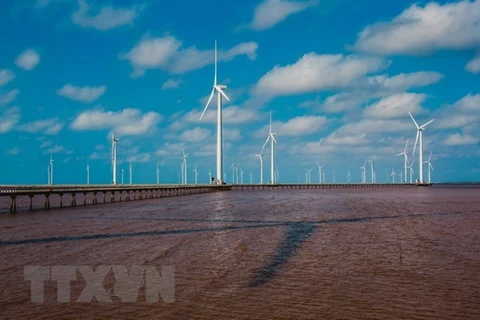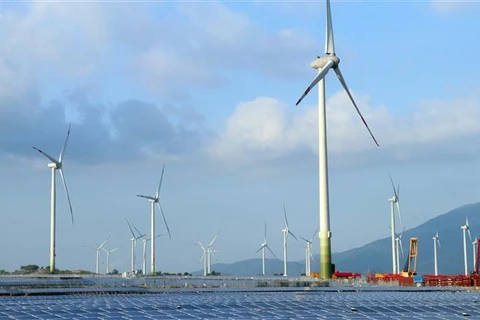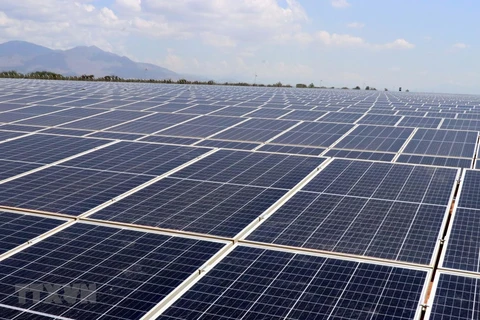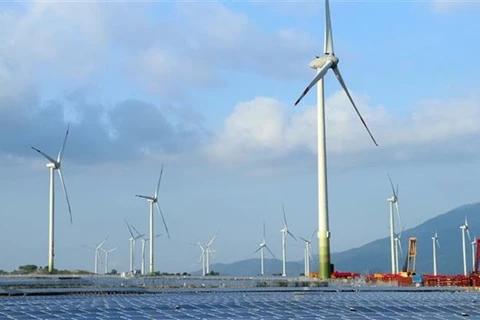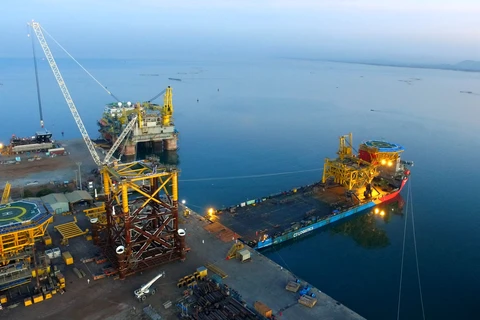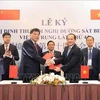Hanoi (VNA) - The Ministry of Industry and Trade has completed and officially submitted the Power Development Plan VIII to the Government. This plan considers developing hydroelectricity and renewable energy projects at an appropriate scale.
Future orientations for development of power industry
According to a representative of the Ministry of Industry and Trade, there have recently been many big changes in electricity development, such as the National Assembly's decision to stop the implementation of the Ninh Thuan nuclear power plant project.
In addition, the Government issued Decision No. 11/2017/QD-TTg on mechanisms to promote the development of solar power projects in Vietnam. Another one, Decision No. 39/2018/QD-TTg, was issued on mechanisms to support the development of wind power projects in Vietnam. These are to create an investment boom in solar and wind power projects (mainly implemented with private investment).
Delays and difficulties in investment and construction of thermal power plants (especially traditional power plants), as well as technological development in electricity production and transmission (especially solar and wind power technology), have greatly reduced production cost of this type of power source.
The emergence of the 4th industrial revolution has greatly affected the production, transmission and distribution of electricity.
These developments have a great impact on the electricity development of Vietnam. The building of the national power development plan for the 2021-2030 period, with a vision to 2045 (the Power Development Plan VIII), is an urgent task.
In the future, the development of Vietnam's electricity industry will face more and more challenges in satisfying the need of economic growth and improving people's living standards.
Electricity demand is growing and will continue to grow in the coming time. Meanwhile, primary energy sources are gradually being exhausted. The ability to supply primary energy sources remains limited. Soon it will be necessary to import fuel.
At the same time, the strong development of renewable energy sources, such as wind and solar power, leads to certain difficulties in power system operation. Also, there are increasingly strict requirements on environmental protection in electricity production.
According to the Ministry of Industry and Trade, it is necessary to develop a national electricity development plan in the 2021-2030 period, with a vision to 2045. This is needed in order to overcome difficulties and challenges to ensure stable and reliable electricity supply to meet the need of socio-economic development as well as national security and defence.
This plan will help orient the future development of the electricity industry, quantify target values of power supply, determine the scale, progress and spatial allocation of power projects and power grids, and propose solutions to implement the plan, a representative of the ministry said.
Considering reduction of coal-fired power projects
Power Development Plan VIII was developed on the basis of orientations in Resolution 55-ND/TW dated February 11, 2020 of the Politburo.
The Vietnam Sustainable Energy Alliance (VSEA) previously raised concerns over the draft of the plan.
Its recommendation clearly states that the concentration of traditional power sources for the current grid ensures the stability of the current power system. It would lose the opportunity to catch up and integrate globally which is expected to create an impetus for the country's advanced energy economy and green development.
The alliance said that because of the rapid improvements in technology, solar power in Vietnam was able to compete with the cost of coal power production this year. Wind power is forecasted to compete with new coal power by 2025.
In conclusion, it said PDP VIII should stick to the path of renewable energy development and avoid being hindered by recent renewable energy obstacles, stressing that instead of cutting clean electricity, dangerous coal power sources should be avoided.
The Ministry of Industry and Trade calculated total investment capital for electricity development in 2021-2030 of about 128.3 billion USD. This includes 95.4 billion USD for electricity and 32.9 billion USD for the grid.
For the next 15 years, the ministry has calculated the need at about 192.3 billion USD. This includes 140.2 billion USD for electricity and 52.1 billion USD for the grid.
Combining the two periods, Vietnam needs 320.6 billion USD to develop its national power system.
With forecasts that Vietnam's GDP growth will reach an average of 6.6 percent per year in 2031-2045 and 5.7 percent per year in 2031-2045, the ministry forecasted that the supply of commercial electricity will reach 491 billion kWh by 2030, and 877 billion kWh by 2045.
The plan expects that by 2030, the total installed capacity of electricity sources in the country will reach 137.2 GW, including 27 percent from coal-fired thermal power, 21 percent from gas thermal power, 18 percent from hydroelectricity, 29 percent from wind power, solar and renewable energy and 4 percent from the imported sources and 1 percent from other types of energy from storage devices./.


